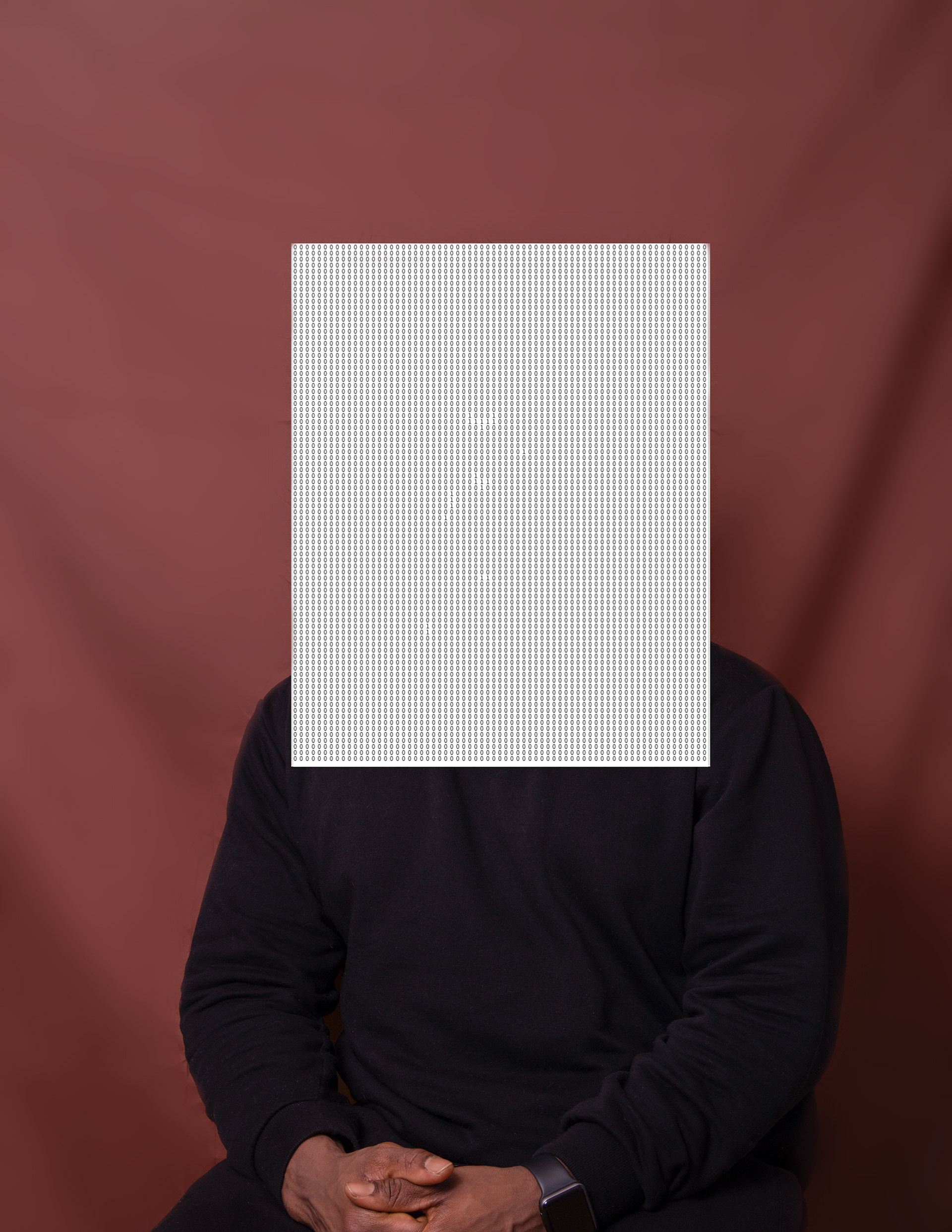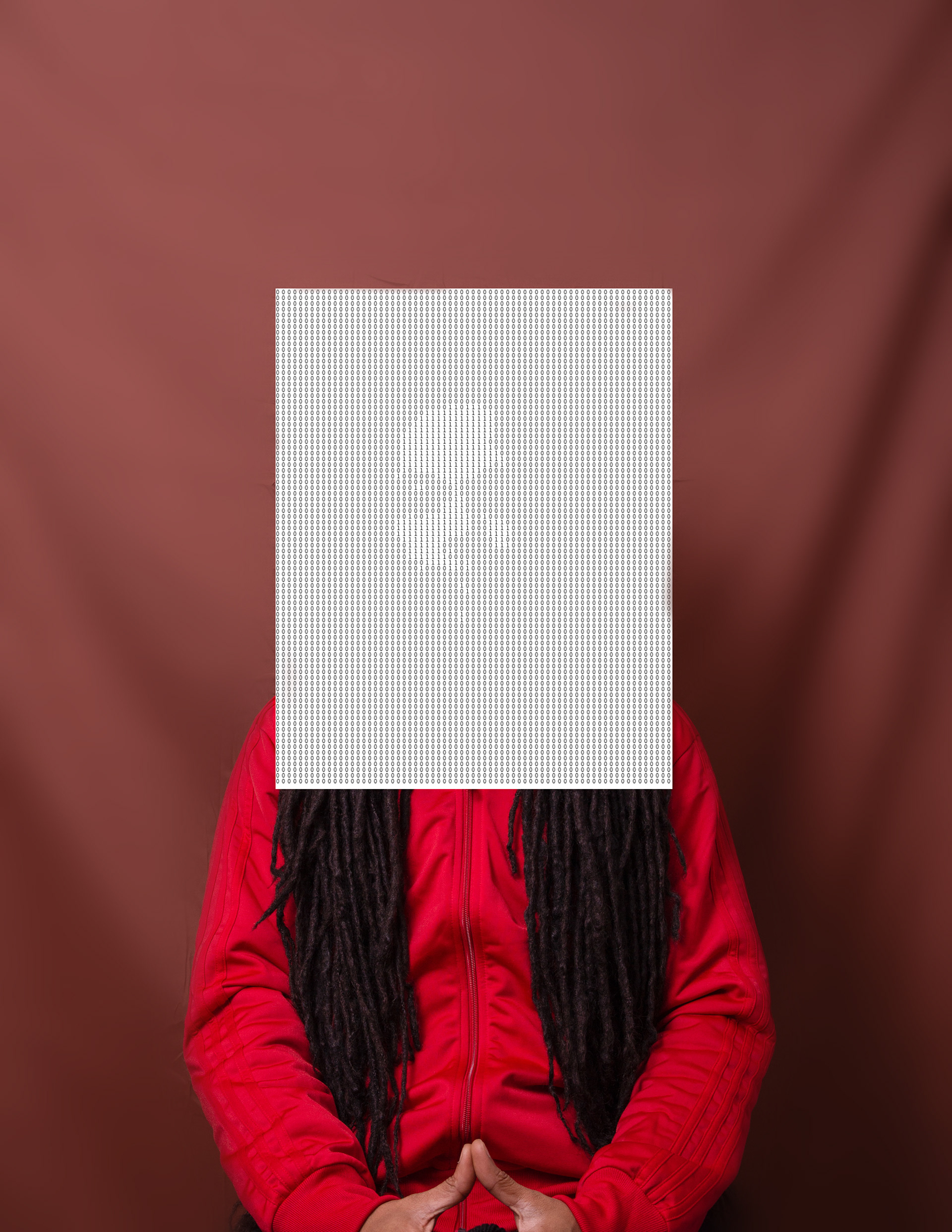Machine-readable and human illegible forms. A binary response is devoid of meaning and complexity. 0 or 1. True or false, present or absent, white or inexistent.
In the realm of facial recognition and algorithmic processing, such digital systems are frequently trained on predominantly lighter skinned faces. As a result, they routinely fail when encountering Black and darker-skinned individuals.
Drawing on Frantz Fanon's Black Skin, White Masks, I consider how colonial ideologies continue to operate within contemporary digital systems.
This body of work engages this intersection of racial violence and technological mediation. Informed by Tina Campt’s Listening to Images and the interventions of photographer Martina Bacigalupo, I question the visual regimes that dictate who is seen, how they are classified, and who is afforded protection or targeted for suspicion.
In this critical framework of visual representation, I transform mugshots into ASCII code —the universal character standard that enables computer communication. This translation renders individuals into raw data, stripping them of identity and nuance.
Through this process, I expose how digital systems perpetuate the dehumanisation and control historically imposed on Black bodies. The transformation into ASCII becomes both a visual critique and a reflective surface, revealing the violence embedded in systems that compress human complexity into binary simplicity.





